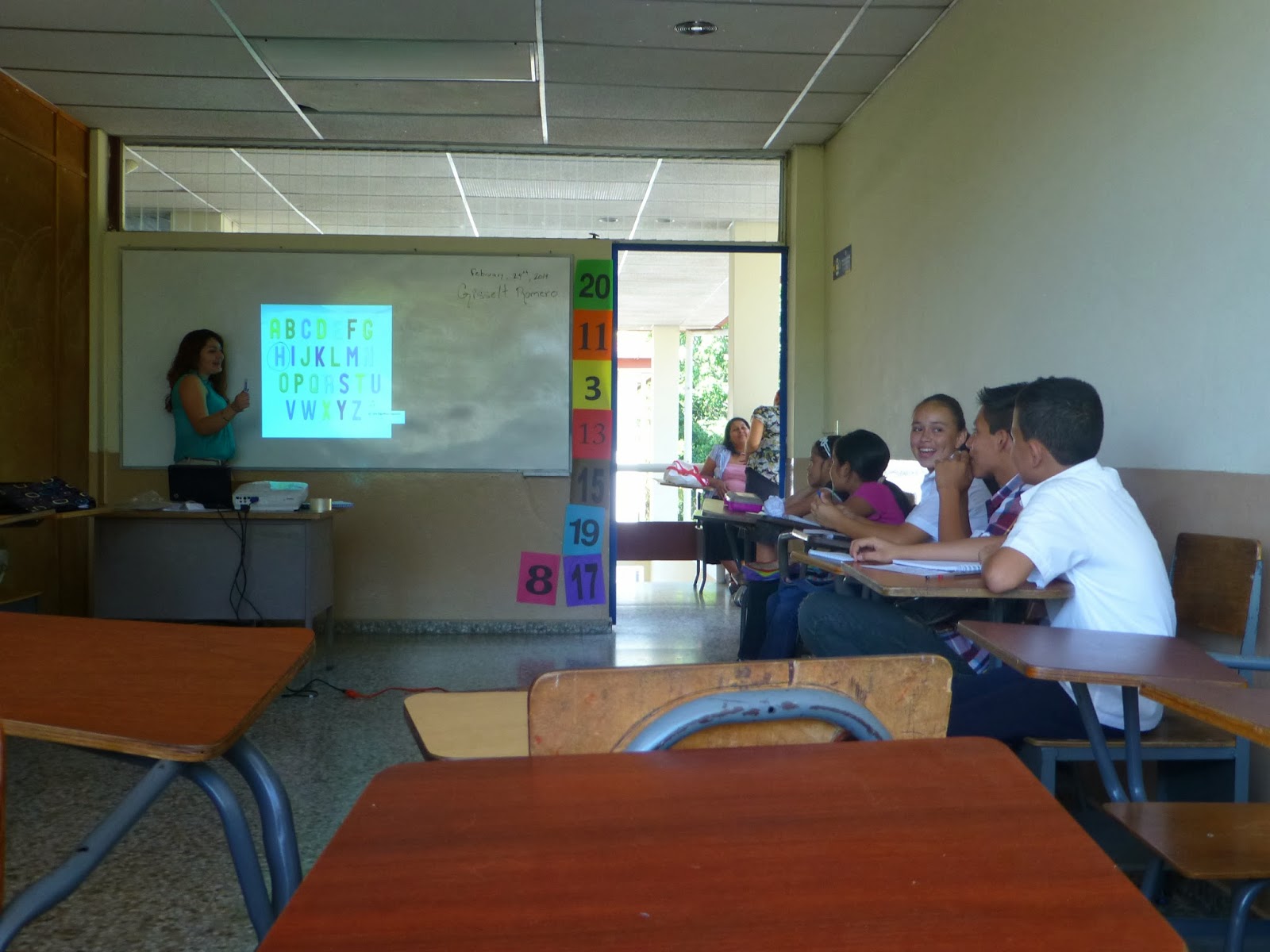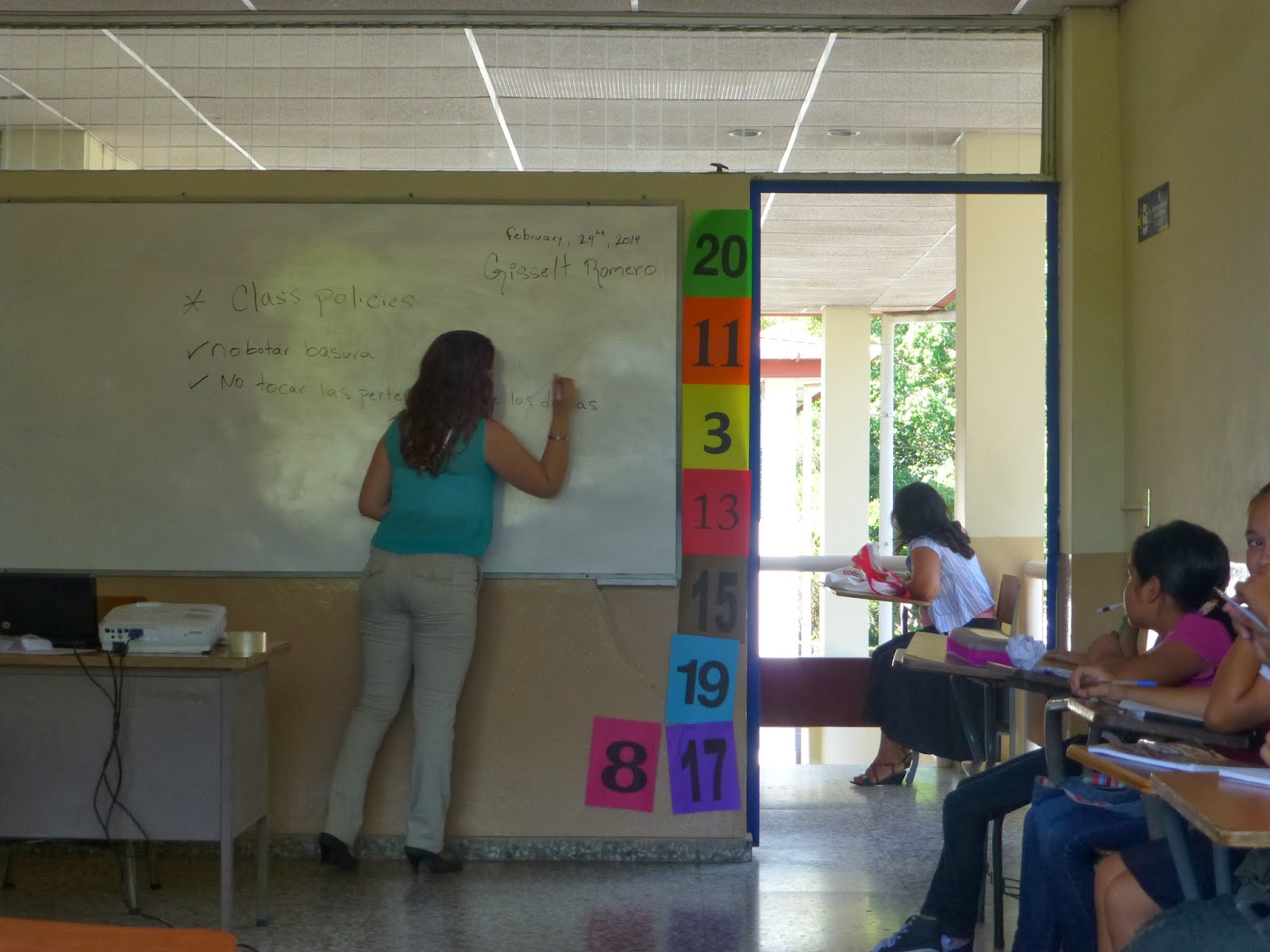Monday, February 24th, 2014
Diagnosis ClassNumber of Ss: 5 students.
Ages: from 11 to 13
The Gathered Objective:
At the end of the class Ss was able to identify most of the primary and secundary colors; recognize the letters of the alphabet; name numbers from 1 to 20, the days of the week and the months of the year, and the classroom objects; and use three important classroom expressions that will be used during this current course.
My First Glance:
Even when they take English classes in the school, this class seemed they did not have any knowledge about English. Some factors could be around into two factors; one could be that they do not practice any language out of the classroom because of the lack of opportunities to have technological sources; other factor could be the fact that they are not interested in learning a second language because they are not motivated on learning it at all.
Ss Encountered with vocabulary and practiced it:
Ss had to circle the letters they were listening to through the track after T's presentation. The alphabet was presented in a Power Point Presentation. For them, recognizing the letters was a little bit difficult because the recorder was not in their rythm. One option to avoid this situation could be to stop every time one letter is told to give them the chance to assimilate the letter that has to be circled. After this short practice, to have them remember and clarify the letter they probably had forgotten, T asked them to repeat the letters that had mispronounced. Then, T asked them to spell their names after listening to the T's name spelling first.
Ss Set the Class Policies:
Although they set the class policies in Spanish, Ss suggested most of them and they were totally in agreement; the main of those was "Being participative in class".
After having taken into account the class policies, T introduced the numbers in a PPT presentation. Then, T asked them to match the numbers with the correct name by using their prior-knowledge. It was difficult because most of them, as I said before, do not practice English at home; and taking one or two hours per week are not enough to either remember words or numbers.
To internalize most of the numbers, T had them repeat the colors and numbers by identifying and sticking the word of the color in the correct color after having selected the number.
It is true that even when these vocabulary have been introduced, it is not enough for them to learn.
"The more they practice, the better result they will get"
The days of the week and the months of the year were introduced in the same way as the alphabet and numbers. I could observe that they could identify them better; it was probably because they are frequently used in daily classes or because of one of the activity that T performed. It was that Ss had to list the days of the week in the logical order as they are. Then, they had to show the one that T has mentioned.
The end of the class was coming and there were not enought time to practice the months of the year and the school objects; by the way, it is true that all this vocabulary have to be practiced in most of the classes.
The last activity was when T had them list the objects that they use in classroom. They could do it in Spanish and English. That was unexpected but they could do it. They could recognize the pen, pencils, laptop, and books. Most of them were problably told because they remembered them, or simply, because they use the word frequently. This last ideas comes because of one phrase that I have heard: "Expeience makes us increase words in our language".
Finally the class ended, T told to them that the more frequent phrases are the ones that help us to communicate in the classroom, such as when we ask for permission to go to the bathroom; to ask for repeating some instruction or explanation that have not been understood; or simply, by saying that something is not understood.
As a homework, T asked them to study these last expressions for the next class.
Friday, February 28th, 2014
Countries and NationalitiesThe Gathered Objective:
At the end of the class Ss was able to talk about where they are from and what nationality they are by talking about other people. They were able to identify the difference between countries and nationalities by naming at least five out of ten.
Class's Development
Reviewing:
T asked for homework. Three of them remembered them and I felt glad because I could observe that they now are interested in learning English.
Different colors, numbers, days of the weeks, months of the year were asked by taking one secret question that were in the secret box.
Encoutering them with the topic:
T's strategies:
- By repeating
- By numbering the words that are heard
- By matching the countries with the corresponding nationalities
Explaining the target language to be used:
T wrote on the board:
- I am from________
- I am __________
T's expectation:
- Ss use the target language in a inductive process.
Practicing:
T handed out strips of paper with the countries and nationalities to be matched. They could do it! That was great! Using the same material, they played a memory game! That was fantastic!!!!
A short reading session was performed:
T started reading and they had to say what is next...
Producing the target language:
- By playing: Who am I?
It was successfully performed!!!
Increasing the target language:
To say the age, T encouraged them to say their ages; although they was hardly pronounced, students could identify what was asked.
With the practice in a line-up arrangement, they could succesfully achieve the goal of this activity.
At the end, with the role-play, the lesson's objective was successully achieved. They were asked each other... That was great!!!!










Thank you Monik for being such a good and effective observer. Keep on doing this that I am sure benefits you and the rest of your classmates.
ResponderEliminar